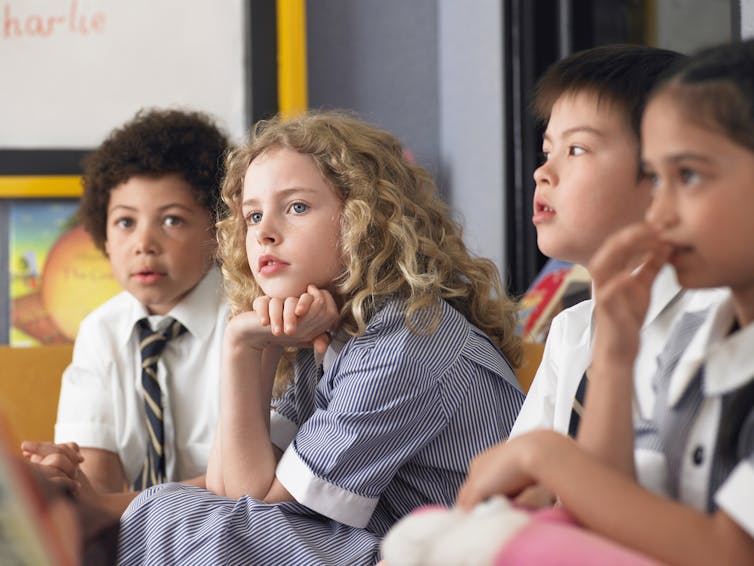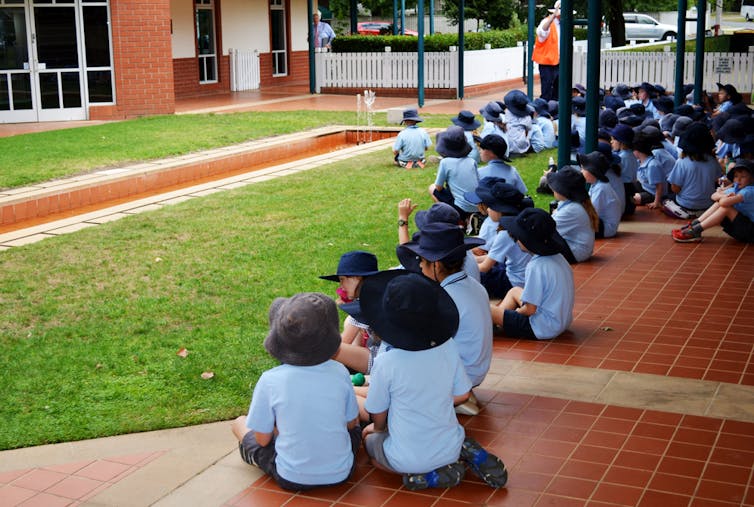Public schools losing out in political power plays

www.shutterstock.com
Last week Prime Minister Scott Morrison announced a significant funding boost for private schools. The federal government will provide an extra A$4.6 billion over the next ten years for Catholic and Independent schools exclusively.
The package includes a A$1.2 billion “Choice and Affordability Fund”, with poorly defined priority objectives relating to diversity and access.
This is an historically significant announcement for the state of Australian schools. Since the Howard government, there have been no significant boosts of income, particularly of this size, for private schools exclusively. It comes in the wake of the previous education minister, Simon Birmingham, conceding private schools are “over-funded”.
Read more:
To reduce inequality in Australian schools, make them less socially segregated
The mantra of choice
Morrison began the announcement with a repeated phrase: “our government believes in choice in education” and again, “our government believes parents should have choice in education”.
In his announcement, the Prime Minister claimed that increased funding will better support parents to choose private schools.
When considering the data on private school enrolment since the 1980s, it’s not true increased government subsidies for private schools better supports parents of all socio-economic status backgrounds to choose private schools. So the claim that this funding boost will improve diversity is ill-informed.
Not surprisingly, the National Catholic Education Commission and Independent School Council of Australia have come out in support of the special deal. The Labor Party and the Australian Education Union have criticised the announcement.
This means we will likely see a continued policy focus on private schools if Morrison remains in office, and a renewed focus on the public sector should Labor be elected. Either way, this issue is set to be an election-year political football.
Public schools educate the most disadvantaged students
While many advocates of choice policies argue lower-income students also attend private schools, lower income students are the minority in these schools. The public sector educates 36% of students who represent the lowest socio-economic status bracket in Australia. This is contrasted to the Independent sector, which educates 13% of the lowest socio-economic status bracket. The proportion is higher in the Catholic sector, at 21%.
The Independent school sector receives a total of 42% of its net recurrent income from both federal and state government. This equals approximately A$8.2 billion to educate 14% of the population.
In terms of the private sector overall (incorporating both the Independent and Catholic sector) the amount of funding private schools receive annually is approximately A$12.8 billion, according to the 2017 Productivity Commission Report. The extra injection of funding by the Morrison government (A$4.6 billion for both Independent and Catholic), is a sizeable sum on top of this.

from www.shutterstock.com
Research also tells us this funding boost for private schools will not necessarily result in lower school fees. Even though federal government funding of private schools has consistently increased since the 1990s, parent tuition fees for the majority of private schools have increased.
Australian Bureau of Statistics data indicate education costs are outstripping inflation. From December 2014 to December 2015, the cost of education for consumers increased by 5.5%, compared to general inflation of 1.5%, as measured by the Consumer Price Index.
Policy should focus on the public sector
The federal government has historically been the principle funder of private schools. Historically, state governments are responsible for state (public) schools. But this clear delineation of responsibility has been consistently shifting since the Gillard/Labor government.
The federal government needs to take a more proactive role in protecting and supporting public schools, and the majority of the population who attend them. Though the states are typically responsible for schools funding, the federal government offers greater protection and security of funding for schools, primarily due to vertical fiscal imbalance and the greater resources it can draw upon. State governments are frequently held at ransom by the federal government.
Read more:
Three charts on: why Catholic primary school parents can afford to pay more
This special funding deal will only further stimulate the private school sector and exacerbate segregation by socio-economic status across school sectors.
The Review to Achieve Education Excellence in Schools calls for a “sector-blind” approach to education reform, an approach that will “enable all students to achieve educational excellence”, regardless of their school sector. This latest announcement contradicts the prior policy papers from this government.
The public school sector caters for our society’s most disadvantaged. This is the school sector we should be actively celebrating and supporting through bold federal government initiatives.![]()
Emma Rowe, Lecturer in the School of Education, Deakin University
This article is republished from The Conversation under a Creative Commons license. Read the original article.























-

-
-
Ellen said
- 26 Sep 2018

-

-
-
youngoldlady said
- 25 Sep 2018
-

-
-
Blossom said
- 25 Sep 2018
-

-
-
mom206279 said
- 25 Sep 2018
Post a comment7:28 am
9:59 pm
9:01 pm
1:41 pm
-

-
-
mom90758 replied
- 25 Sep 2018 , 2:19 pm
ReplyTo post a review/comment please join us or login so we can allocate your points.